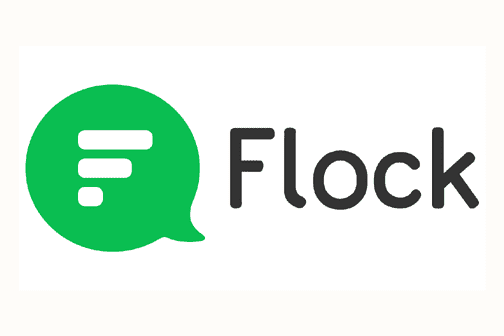Flock is built entirely upon chat as its underlying foundation, and developers can build bots, widgets and even entire apps on the framework.
There are more than a few internal enterprise social networks competing for deployments in a cutthroat market right now. Some of the ones you may know are Slack, Facebook for Business, Jive, Convo, Google+, Cisco Jabber, Jostle, Microsoft Teams, VMware Socialcast, Salesforce Chatter, SocialText, IBM Connections and Tibbr.
Most of them have their built-in constituencies, all of them have their slightly different feature sets. But they’re all fundamentally similar in what they do: They use a server or cloud-based app to connect teams of workers to get tasks and projects done on time, efficiently and in a transparent manner.
Guess what? We have another one to add to this already impressive list. It’s Flock, which started in the Far East and is boldly making inroads in the U.S.
The two most important things that set Flock apart from all the rest is that: a) it is built entirely upon chat as its underlying foundation; and b) developers can build bots, widgets and even entire apps on the framework, then easily feed them into Flock’s own appstore for distribution.
‘Fastest, Slickest Team Messenger’
Flock, whose CEO and founder, Bhavin Turakhia, describes it as “the fastest and slickest team messenger” now available, has been available for about two years, so it’s been tested in the real world.
The freemium-based application has recorded between 250,000 and 300,000 downloads, has about 40,000 to 50,000 active users in 25,000 enterprises, and is growing fast, Turakhia told eWEEK. Turkhia is co-founder and CEO of Directi, Flock’s parent company.
San Francisco-based Flock made news Dec. 20 with the release of its application development platform, FlockOS, which Turakhia called “the world’s first chat operating system.”
And what exactly is a chat operating system? “Within Flock, you can actually add buttons or widgets and control the UI (as you would in a software development kit),” Turakhia said.
Thus, developers can build customized apps, bots and integrations on Flock itself, and either use them within their organization or publish them in the Flock Appstore, making them available for all Flock users.
Base App is Free of Charge
The base Flock product is free of charge; to add specific features will cost customers a simple $3/per person/per month, Turakhia said.
“Right now our focus is on growth,” Turakhia said. “Increasingly, there will be the need for simple apps that are built on top of a messaging framework. Flock is a team messenger that competes in a space with Microsoft, Facebook, Slack and a lot of other incumbents. But we have been adopted by companies of all shapes and sizes globally. Software development teams, tech companies, startups and sales and marketing teams use us, as do community groups, nonprofits and so on.
“We have an outstanding UI and other capabilities that distinguish us from competition. We’re just starting down that path where we’re looking at aggressive growth and global reach.”
FlockOS provides a first-of-its-kind widgets feature that allows users to connect with any Flock app, similar to that of any fully interactive website. With the kind of powerful apps that can be built, a user could get all their work done from within Flock, enabling massive productivity benefits.
FlockOS allows developers to build apps that:
—Provide a tightly integrated experience by using widgets. These include the attachment widget, sidebar widget, and modal widget — all capable of displaying rich HTML.
—Send messages and rich attachments to Flock users and groups. For example, the Poll app in Flock creates an opinion poll in a rich attachment format and immediately broadcasts it to all in a group. It also shows real time updates on the poll results.
—Add buttons to attachments, chat tab bar, attachment picker bar or app launcher bar. The meticulously designed app-specific buttons embedded in the interface ensure higher app discoverability, and in turn, boost app usage.
—Set up slash commands providing an additional option for users to interact with the app.
—Configure a bot to send directed messages to users, carry on conversations and complete tasks from within Flock.
—Customize URL previews for specific URLs, so the app can display information relevant for the user.
—Deliver a consistent experience across platforms, including web, desktop and mobile, without having to rework any code.
With these capabilities, development teams can create apps to meet the specific needs of their teams and organizations, through functionalities that employees demand from their current messaging and collaboration tools, Turakhia said.
“Apps built on FlockOS empower teams to have more choices in the functionalities and capabilities of the collaboration platforms they use every day,” Turakhia said. “Instead of being ‘stuck’ with using a particular service and its limited capabilities, teams can now create a custom environment within Flock that is designed for their unique needs.”
Developers can currently build custom apps on FlockOS using Java and node.js SDKs with additional SDKs (Python, Ruby, etc.) to roll out soon, Turakhia said.
Examples of Apps Built on FlockOS
–The To-do app allows a user to simultaneously have a conversation with the team, as well as assign them to-dos — all within Flock. It is easy to track the status of these to-dos as all updates are sent as message notifications on the respective Flock group.
–The Notes app allows the user to quickly make shareable rich notes. All users in a Flock group can view or edit it, thus making it a resourceful collaboration tool.
–The soon-to-be-released Meeting Scheduler app will help users schedule meetings, invite other participants, get participant feedback on meeting slots, and even view their entire calendar at a glance — all from within Flock.
Developers and enterprises interested in creating their unique apps and integrations for FlockOS can go here.
For a list of apps and integrations that are available, visit Flock Appstore. This roster is constantly growing and includes a host of popular apps like Github, Trello, Twitter and Google Apps.
You can create a Flock team here.
View a video introduction to FlockOS here.







